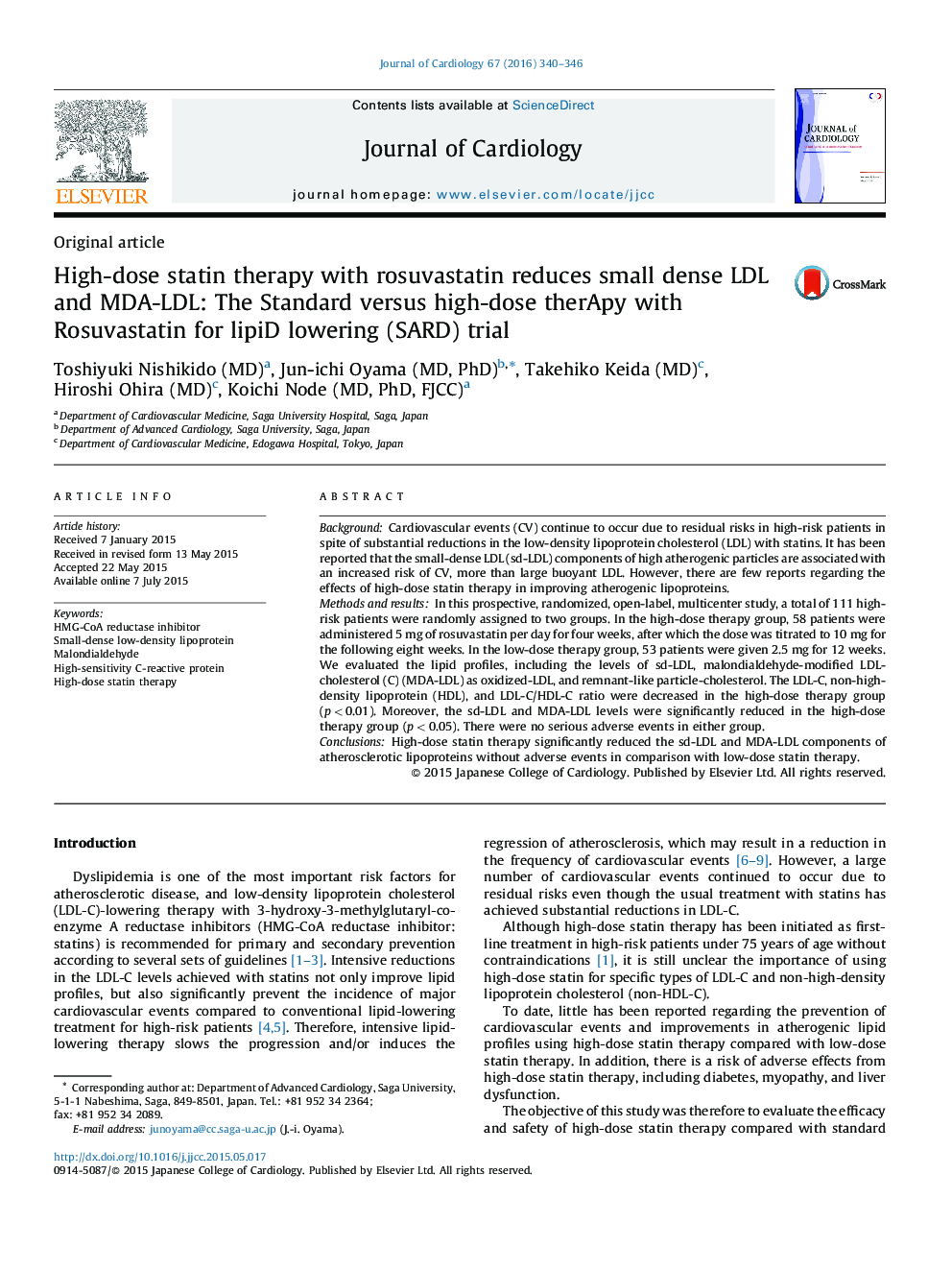| Article ID | Journal | Published Year | Pages | File Type |
|---|---|---|---|---|
| 2962862 | Journal of Cardiology | 2016 | 7 Pages |
BackgroundCardiovascular events (CV) continue to occur due to residual risks in high-risk patients in spite of substantial reductions in the low-density lipoprotein cholesterol (LDL) with statins. It has been reported that the small-dense LDL (sd-LDL) components of high atherogenic particles are associated with an increased risk of CV, more than large buoyant LDL. However, there are few reports regarding the effects of high-dose statin therapy in improving atherogenic lipoproteins.Methods and resultsIn this prospective, randomized, open-label, multicenter study, a total of 111 high-risk patients were randomly assigned to two groups. In the high-dose therapy group, 58 patients were administered 5 mg of rosuvastatin per day for four weeks, after which the dose was titrated to 10 mg for the following eight weeks. In the low-dose therapy group, 53 patients were given 2.5 mg for 12 weeks. We evaluated the lipid profiles, including the levels of sd-LDL, malondialdehyde-modified LDL-cholesterol (C) (MDA-LDL) as oxidized-LDL, and remnant-like particle-cholesterol. The LDL-C, non-high-density lipoprotein (HDL), and LDL-C/HDL-C ratio were decreased in the high-dose therapy group (p < 0.01). Moreover, the sd-LDL and MDA-LDL levels were significantly reduced in the high-dose therapy group (p < 0.05). There were no serious adverse events in either group.ConclusionsHigh-dose statin therapy significantly reduced the sd-LDL and MDA-LDL components of atherosclerotic lipoproteins without adverse events in comparison with low-dose statin therapy.
